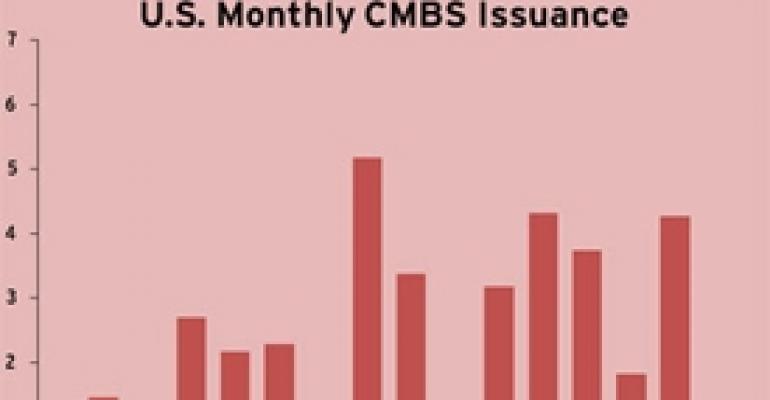Recent events have proved once again that even the best laid plans of real estate lenders often go awry.
As the commercial real estate market stabilized in 2010 and conduit lenders began to feel more comfortable with property fundamentals, many industry insiders predicted CMBS issuance would spike to $40 billion or $50 billion this year.
But with the European debt crisis, the possibility of a double-dip recession in the U.S., the cancellation of a Citigroup/Goldman Sachs securitization in August and admissions from Standard & Poor’s that it had “potentially conflicting methods” in how it was rating securitizations, bond buyers have been spooked in recent months. As a result, CMBS issuance in 2011 might well come in under $30 billion, according to Manus Clancy, senior managing director with Trepp LLC, a New York City-based provider of CMBS and commercial mortgage information. The figure would be far ahead of the $11.7 billion in issuance completed last year, but still nowhere near the peak year of 2007 when originators cranked out $230 billion in loans.

Year-to-date, conduit lenders closed $26 billion in new issuance, including $4.3 billion in September, according to Commercial Mortgage Alert, an industry newsletter. There might be a few more issues in the works, but don’t expect a huge spike in volume. Based on recent indications from issuers, overall CMBS volume could potentially rise by another $3 billion by the end of the year, according to Ken Cheng, managing director of CMBS new issue with the Structured Credit Ratings business of Morningstar.
“I think there are a lot of issues going on and they are each weighing on the CMBS market,” says Clancy, citing fears of a double dip and the growing concern that prices on trophy commercial buildings are now too high. “The spread volatility has made lenders very, very skittish. At the end of 2010, they had kind of a predictable spread level they could [work with]. Now they are not sure how to price those loans.”
As of October 6, spreads to Treasuries on 10-year fixed-rate triple A conduit loans stood at 339 basis points, according to Commercial Mortgage Alert. The figure was more than a percentage point higher than the 52-week average of 218 basis points. Spreads on 10-year fixed-rate triple B notes were at 4,543 basis points, up from a 52-week average of 3,890 basis points.
Higher spreads wouldn’t be such an issue if market insiders knew they would stay at the current level for some time, Clancy says. But many are worried spreads might climb higher and higher in coming weeks and months.
“There are some storm clouds on the horizon—swap rates have gone up in the last week or so. One more scare from either the Euro or the stock market taking a dive and B-note buyers will pull back again and that will have an effect on the overall market,” says Dan E. Gorczycki, managing director in the New York City office of Savills LLC, a real estate services provider.
Continue reading at nreionline.com.

